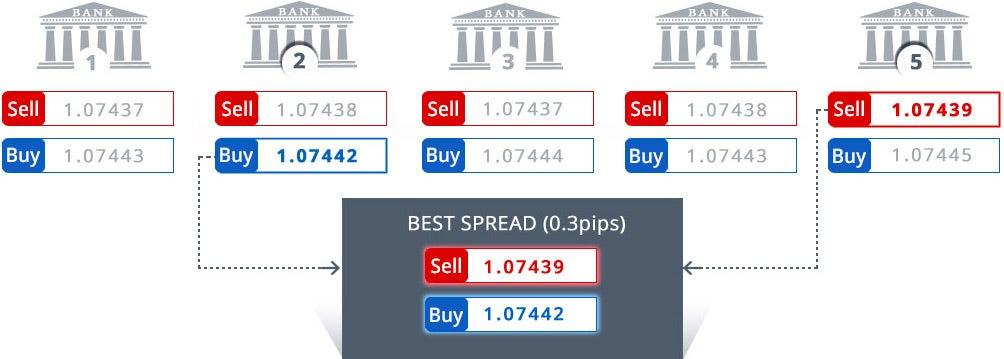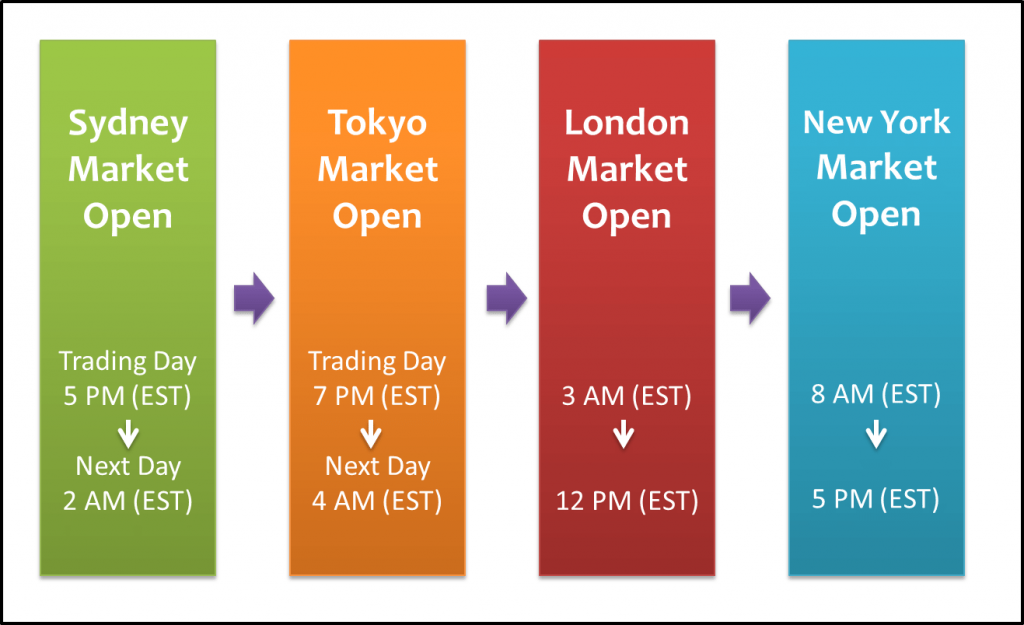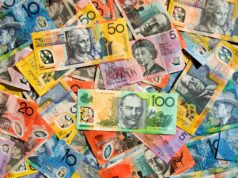Pundits describe forex as the largest and most liquid capital market in the world. It’s this unique characteristic of forex that makes it an attractive marketplace for traders. The sheer level of liquidity surpasses that of even older markets like stocks and commodities.
The fact that the markets can run so efficiently around the clock 24/5 is astonishing. Appreciating how liquidity works in forex gives us the perspective to deeply understand how the markets here operate and what pairs we should concentrate on.
What is liquidity in forex?
Analysts use the term liquidity in the realms of business, economics, and investing when referring to the speed at which an individual can buy and sell an asset. In the context of forex, liquidity works in the same manner.
As with any financial market, there are millions of buyers and sellers worldwide who are all performing different transactions by the seconds. A highly liquid market like forex makes it possible for traders to profit from a mere ten pips and close the position with a withdrawable profit.
The critical party responsible for this seamlessness is a liquidity provider without whom no efficient market would exist.
Who are the liquidity providers in the forex?
Defining who the liquidity providers in forex are is a broad endeavor. Though if one prefers to be technical, some of the leading liquidity providers in forex are the following recognized large commercial banks:
- Bank of America
- Barclays
- BNP Paribas
- Citadel
- Citi
- Commerzbank
- Deutsche Bank
- HSBC
- JPMorgan
- Morgan Stanley
- Nomura
- Royal Bank of Canada
- Royal Bank of Scotland
- Societe Generale
- UBS
In a broad sense, however, liquidity is provided by all participants in the forex. Aside from the banks in the previous list, the participants can range from central and investment banks, multinational corporations, brokers, institutional investors, insurance companies, and retail traders.
We can easily observe that a large number of players in the forex contribute to its astronomical transaction volume.
The preferred way liquidity is provided in forex
A broker acts as the intermediary who links traders to the interbank market, who are effectively the liquidity providers in the list. This facilitation makes it simpler to engage in forex, albeit there is a cost for this service.
The ideal broker has an established network of numerous liquidity providers that enables access to various prices. Such providers can absorb an enormous amount of orders without affecting the market, and they can do this successfully around the clock.

In the image above, we can see that whenever a client places a position, the broker sends their orders to various liquidity providers who all offer different prices. Through a process of elimination, the broker should select the most competitive price for the client.
The broker ranks the providers according to order rejection rate, latency, and spreads. Regarding the latter, by taking the best ask price and best bid prices, the difference is known as the spread. This charge is compensated to the broker in every position regardless of its eventual outcome.
The process above is the preferred approach used by STP (straight-through processing) brokers, which is transparent for two reasons:
- Because the orders are routed ‘straight through’ to the liquidity providers, there’s very little chance for manipulation from the brokers themselves since the prices are a true reflection of the real markets.
- Liquidity providers don’t see any information about a trader’s order like stops as the orders appear as coming from the broker.
The not-so preferred way liquidity is provided in forex
The other less preferred approach is where the broker acts as the sole liquidity provider, known as the market maker model. Although the liquidity providers listed previously are also market makers, they also offer other financial services.
A broker that is solely a market maker only provides this service to its clients. The market maker approach from a broker’s perspective works in precisely the same way, except for a perceived conflict of interest.
While many market maker brokers exist who act ethically because these providers are the liquidity provider to their clients, they only have one resource to rely on. So, when clients are profitable, the profits come directly from them instead of different providers. Conversely, if clients lose, that money goes to their pockets.
What does liquidity really mean for forex traders?
Although forex is, for the most part, a highly liquid market, not every instrument is necessarily worth trading. There are discrepancies across different forex markets, namely major, minor pairs (or crosses), and exotic pairs.
Major pairs are the most liquid simply because they comprise currencies from seven leading first world nations, which naturally attract a huge number of speculators. For these reasons, a trader may opt to exclusively stick to these pairs, namely AUD/USD, EUR/USD, GBP/USD, NZD/USD, USD/CAD, USD/CHF, and USD/JPY.
Minor pairs, although only the second most liquid, are also worthwhile since they combine the majors into interesting pairings. Most traders tend to have a mixed bag of at least all major pairs and some minors or can rightfully choose to trade both major and minor pairs equally.
Overall, both of these markets are relatively stable. Stability is vital for any trader, especially as the forex is inherently dynamic.
Most exotics are known for severely lacking in liquidity, meaning they are prone to erratic price movements. This weakness is not conducive for most people, notwithstanding that these pairs also incur higher spreads than their counterparts.
Liquidity in different trading sessions

We can best divide the forex market into four distinct trading sessions, namely Sydney, Tokyo (or Asian), London (or European), and New York sessions. Sessions mainly matter for scalpers and day traders because their strategies typically rely on the volume where liquidity is at its peak.
The Sydney and Tokyo sessions are regarded as the quietest trading sessions, contrasting the busy London and New York sessions. Big moves often occur, particularly during the New York sessions, where liquidity rises tremendously with the entering of market participants from the USA, arguably the busiest financial center globally.
Conclusion
The sheer volume of liquidity in forex certainly deserves some study to broaden one’s scope in understanding how the markets and brokers work, what happens when we place an order, and how the market reacts during different periods.




